Section II - Performance Tests, Synthetic
In this section of testing we cover the synthetics. These are tests that run a scripted sequence of internal APIs or that use another installed application to perform a series of scripted events. They are great in that they can provide reproducible results across various platforms. On the down side, synthetic tests can be fooled with driver tweaks and optimizations. In some cases it is necessary to rename the .exe file to something generic to discover if this is the case. In any event when this is needed (when a test shows a drastic difference in performance over the renamed exe) we will note this and show both results for comparison.
PCMark7 -
PCMark7 is the latest general performance test from FutureMark. As each generation of this benchmark has evolved and developed we have watched them add more and more realistic tests to this suite. With this generation we find more media tests, (audio and video transcoding) moving of large files, multiple web page rendering, and much more (the even added DX10 gaming). We use the Overall Performance and Common Usage suites in our testing.
| PCMark07 iGPU Stock | PCMark07 iGPU Overclocked |
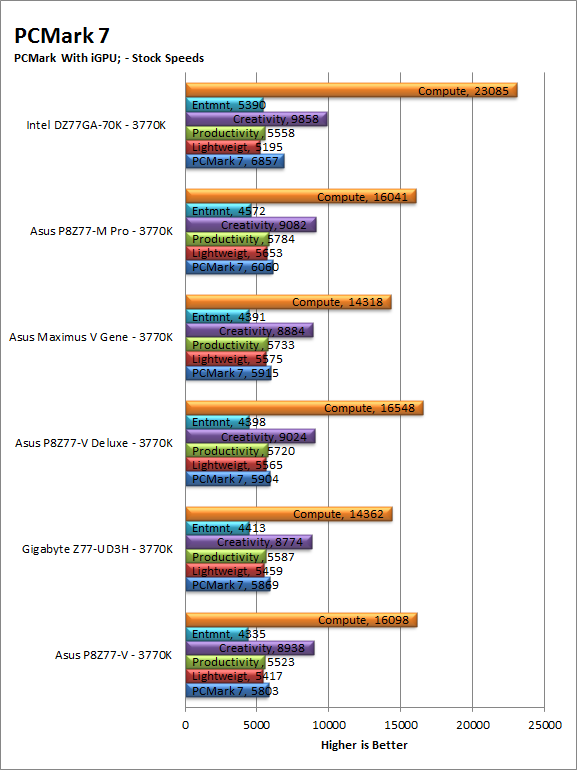 |
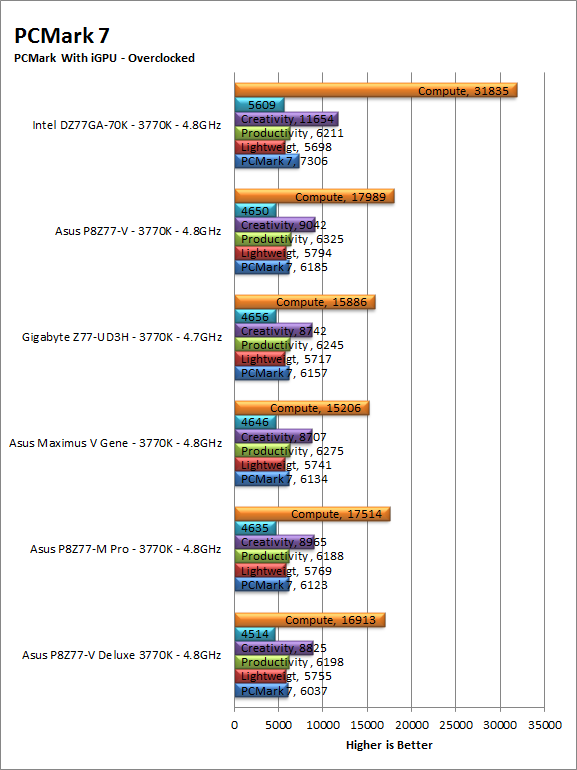 |
For general computing tasks the Z77X-UD3H falls into the middle of our group. This is with the iGPU and the HD5870. We were a little surprised here as we expected it to perform better with the memory and HDD performance that we saw. Still the numbers are very close here(with the exception of the Intel DZ77GA-70K) so we sure that it will still do the job for you.
| PCMark07 With Add-in GPU Stock | PCMark07 With Add-in GPU Overclocked |
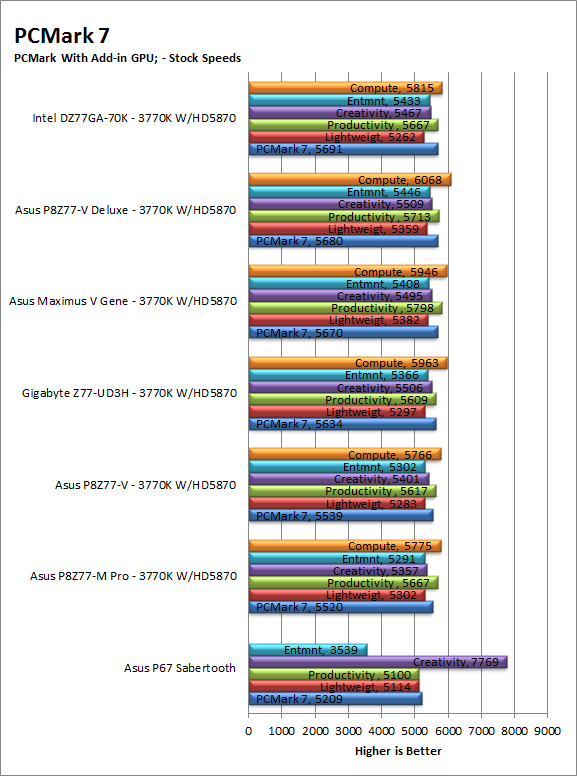 |
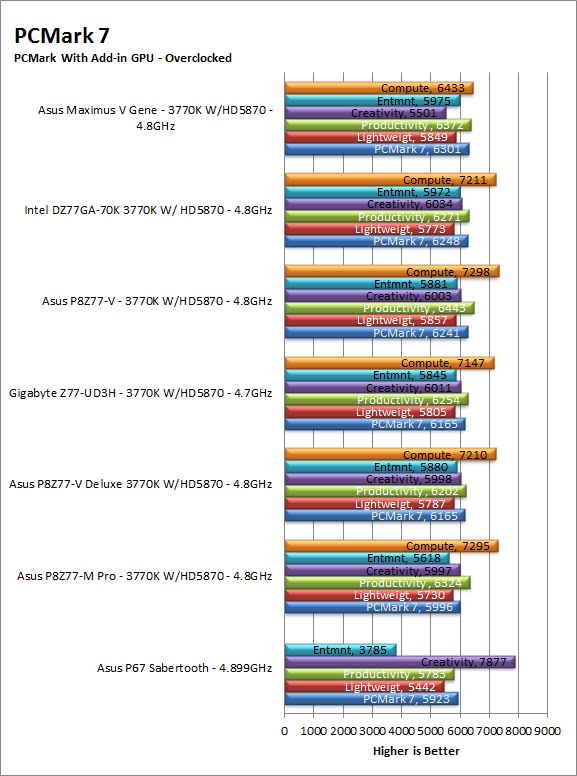 |
3DMark 11 -
3DMark 11 is the other Futuremark test that we run on our motherboards. This test simulates the typical tasks that a GPU (and system) would have to perform to provide you with a good gaming experience. It is based on the DX9, DX10 and DX11 engines but can only be installed on Windows Vista or later. The suite of tests covers DX9, DX10, and of course DX11 rendering; it also covers AI computations and physics. That’s right I said Physics the latest version of 3DMark uses a Havok physics engine. This removes the advantage that nVidia had with 3DMark Vantage.
| 3DMark11 iGPU Stock | 3DMark11 iGPU Overclocked |
 |
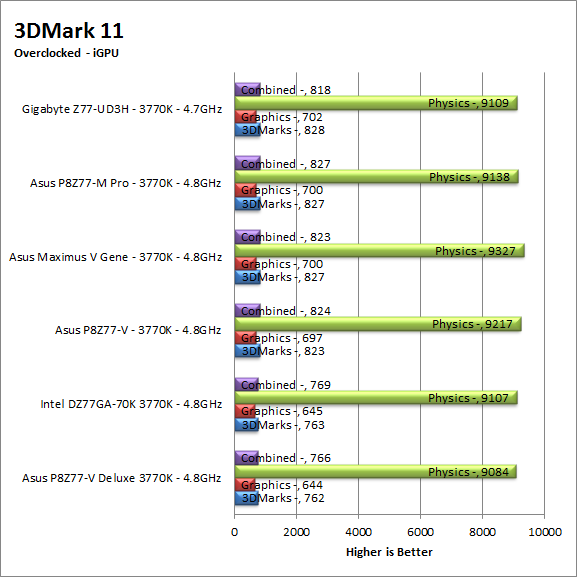 |
Oddly enough we found that the Z77X-UD3H did not do as well as other Z77 boards in 3DMark11 when we dropped the HD 5807 in. This was under both stock and overclocked speeds. This was surprising considering how well it performed with just the GMA 4000 running the show. It is possible there is something going on with the way the system auto detects the generation of the GPU. We saw something like this before on another board and could be seeing it again. Still this is a synthetic test and while it tells a portion of the story it is not all of it. We will have to see how the Z77X-UD3H does when we put it through our real world gaming.
| 3DMark11 With Add-In GPU Stock | 3DMark11 With Add-In GPU Overclocked |
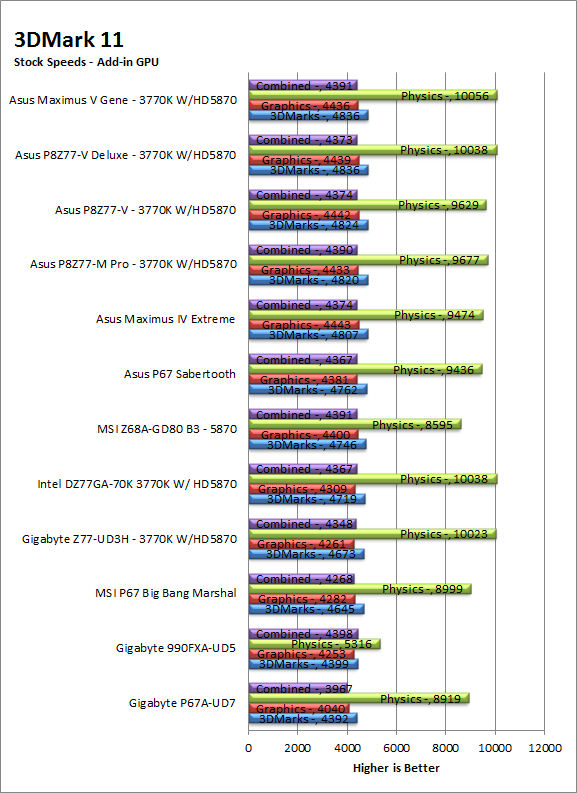 |
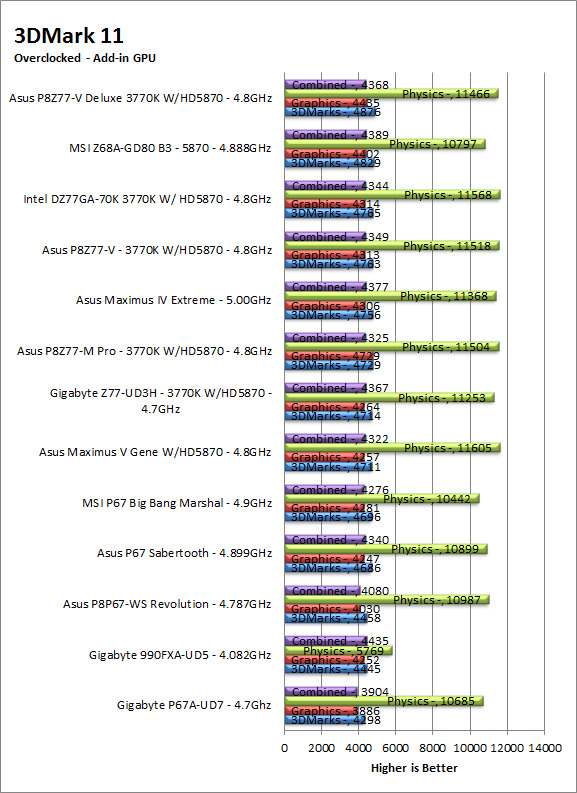 |
HyperPi 0.99b -
HyperPi is a front end application that allows you to easily run multiple instances of the SuperPi application. SuperPi, for those that are not familiar with it, is an application that measures the time it takes to calculate the number Pi out to as many as 32 million places. This calculation is then checked and run multiple times (up to 24 for a 32M run). This test stresses the CPU, Memory and HDD as data is handed off between the three. If there is a weak link, HyperPi will show it. For our testing we run the 32M test on as many cores (and threads) as the CPU has available. The slowest CPU time is then recorded. 
The Gigabyte Z77X-UD3H did ok in our HyperPi testing. It was about 18 seconds behind the two leaders at stock speeds. This is not all that bad and still shows that it can perform well under full load. When we ran the same test at 4.7GHz the times dropped off. If this is not an issue with the way HyperPi loads up the calculations then we might see this performance reflected in our rendering tests later.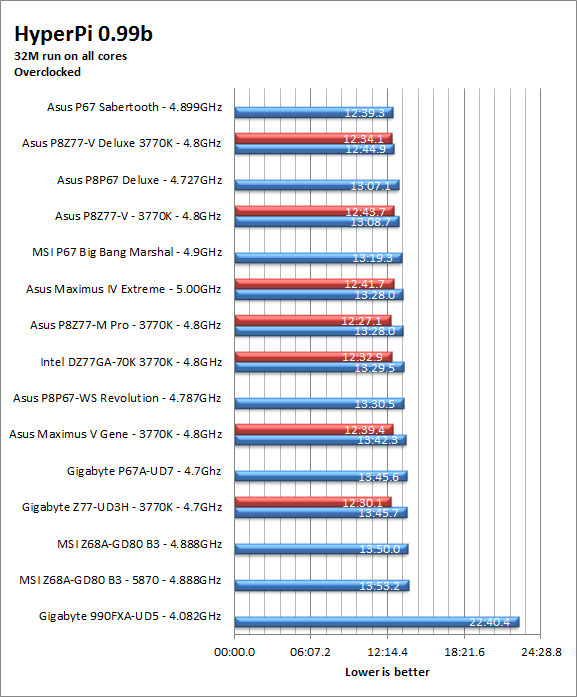
Cinebench R11.5 -
Cinebench R11.5 is the 11th release of Maxon’s rendering test. This test is based off of the Cinema 4D engine, which is one of the industry standard tools for digital animation. It is a powerful product with many different modules that can be “plugged” into it to increase its effectiveness. With Cinebench you get to see how your computer would do using this application. There are two tests; one tests the CPU’s ability to render an image across multiple cores or threads. The other tests your systems ability to handle OpenGL based rendering.
| Cinebench R11.5 CPU Render Stock | Cinebench R11.5 CPU Render Overclocked |
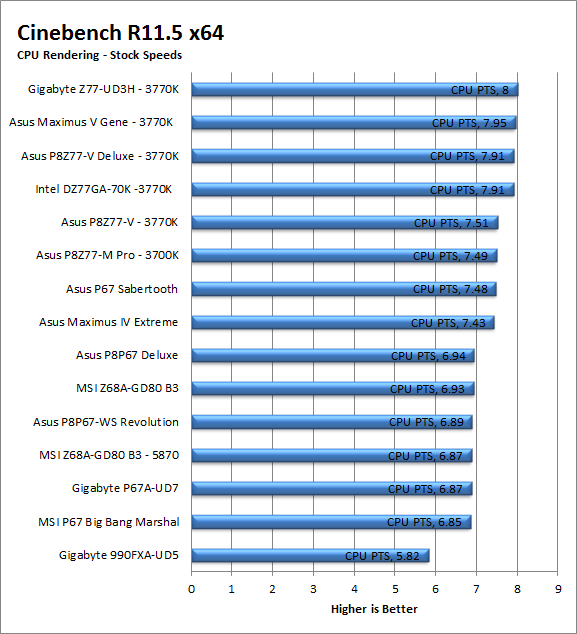 |
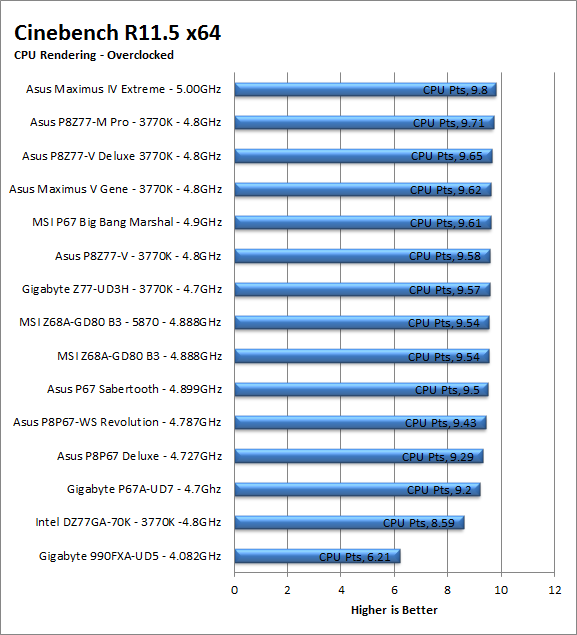 |
At stock speeds the Z77X-UD3H does very well running the Cinebench R11.5 CPU render test. We see it out on front by .05 (which is actually a lot). Overclocked it falls pretty far behind which is surprising, but again could be due to the way the board is handling moving data back and forth between the memory and CPU under load.
| Cinebench R11.5 OpenGL Render Stock | Cinebench R11.5 OpenGL Render Overclocked |
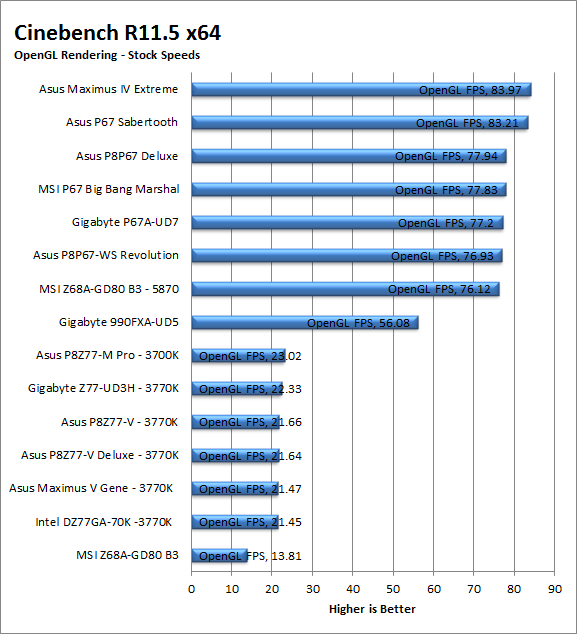 |
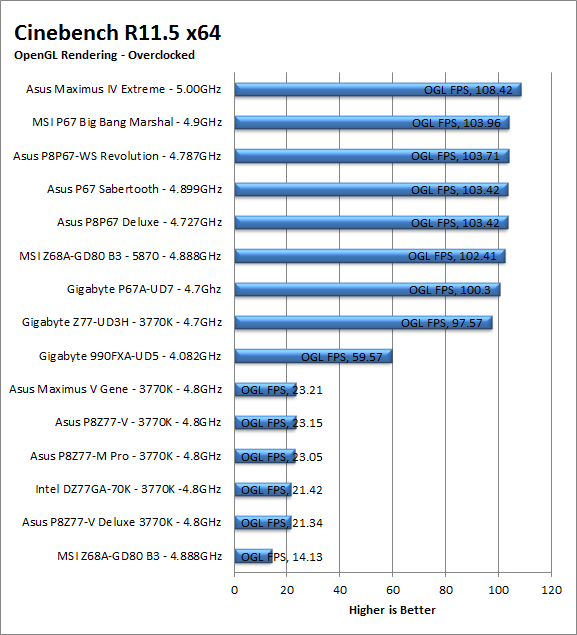 |

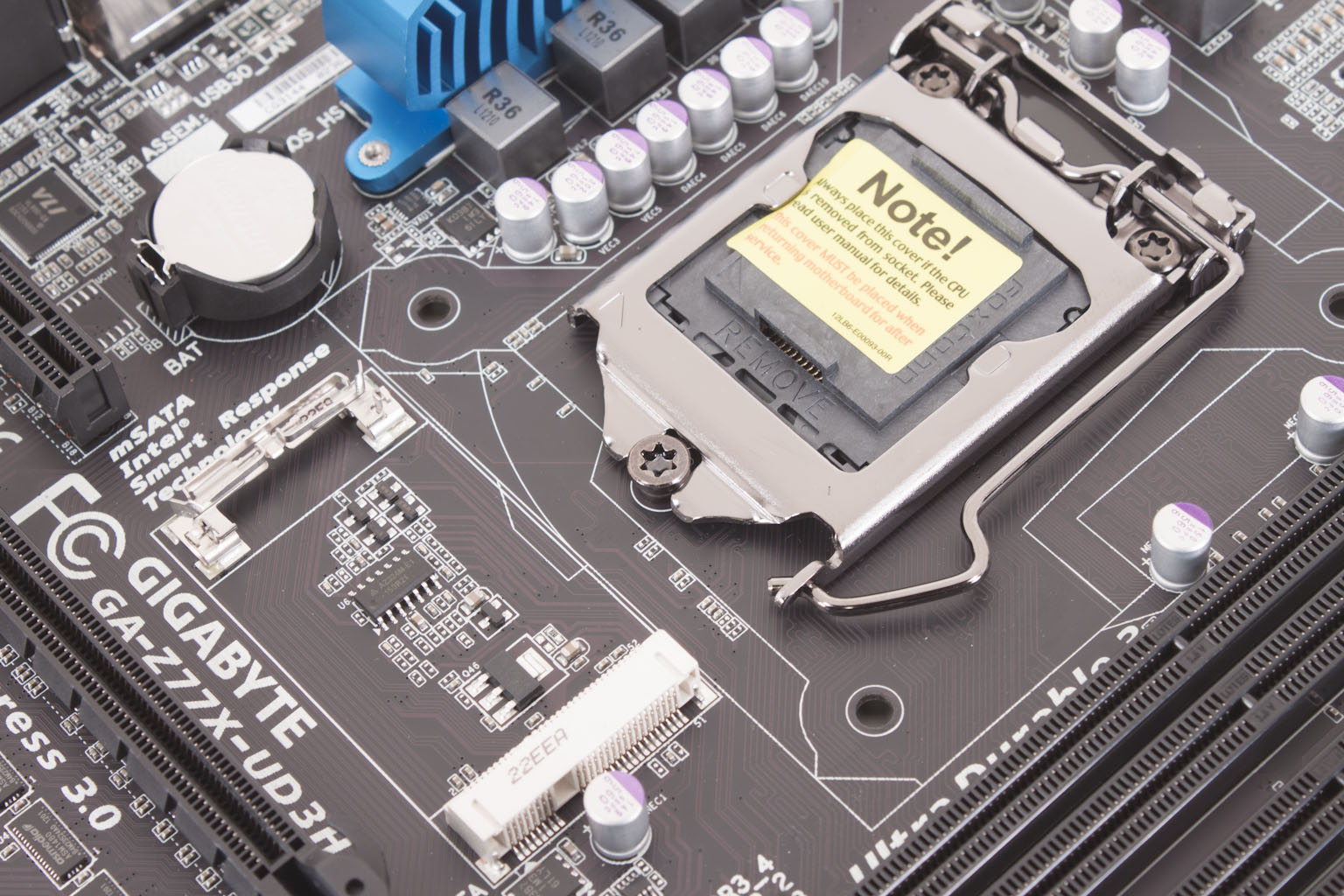 After spending some time working with the Gigabyte Z77X-UD3H and all of the features that are packed into this board we are ready to cover the performance and user experience side of this motherboard. For those of you that might have missed it you can catch our
After spending some time working with the Gigabyte Z77X-UD3H and all of the features that are packed into this board we are ready to cover the performance and user experience side of this motherboard. For those of you that might have missed it you can catch our 

